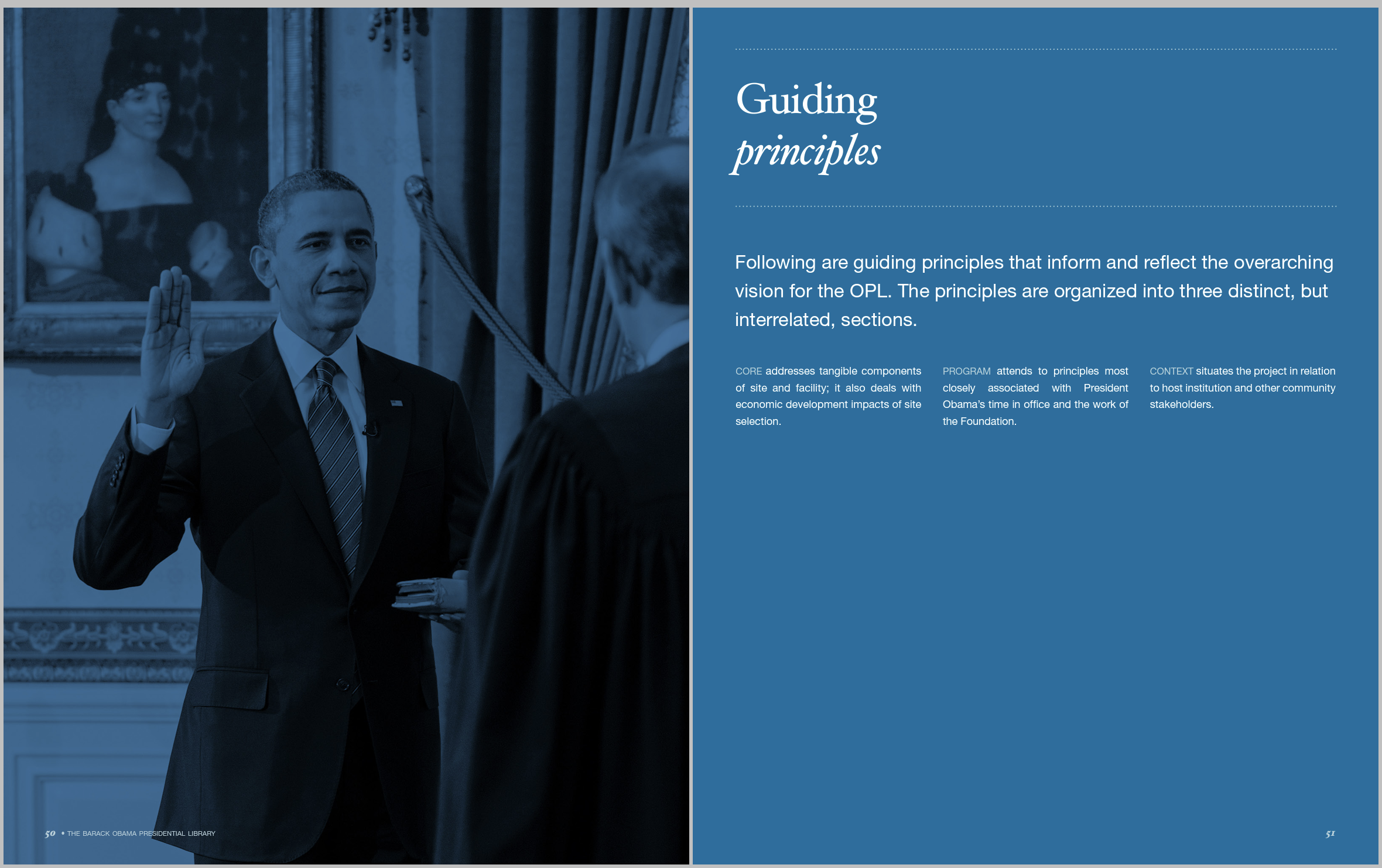Obama Presidential Center: guiding principles for a future landmark
Presidential libraries are impressive edifices meant to telegraph the heft of a statesman’s legacy. They hold tons of archival records, stacks of presidential paraphernalia, roomfools of portraits. Well, not any more. President Barack Obama’s presidential library departs from that template. It expresses the spirit of a former community organizer, a digital presidency, and the first African American to occupy the office.
Early proofs of the document were corrected by President Obama and his team.
I was approached by Jones Lang Lasalle, a real estate consultancy working on behalf of the President, and Clayco, a prominent builder, to develop a Request for Proposals for universities or cities that bid to host the future presidential library. Rather than a basic RFP, however, I imagined this document conveying the core values of the presidency — and its global impact — to guide the development and design process. Martin Nesbitt, chair of the Obama Foundation, and Robbin Cohen, its ED, agreed. Over the next months, we worked with Foundation’s stakeholders and the Obamas to distill a set of principles: porousness and openness to the community, resilience and the environment, economic development and justice. With help from Clayco’s team, we assembled a definitive guide to existing presidential library campuses while the National Archives and Records Administration contributed its own technical criteria.



The final document went to press as “A Shared Destiny,” a two-volume book clad in a commemorative sleeve. I drew the title from President Obama’s election-night message of unity: “Your stories are singular,” he said, “but our destiny is shared.” The President took an active editorial role — at all hours of day and night, I received markups from his personal secretary, with underlines, questions, and suggestions. In addition to editing and writing the bulk of the content, I also served as the publication’s art director and pitched in on design and prepress. And because we kept the project confidential in advance of the release of the RFP, I took great pleasure in making up mysterious code names and otherwise perfecting my spycraft.

